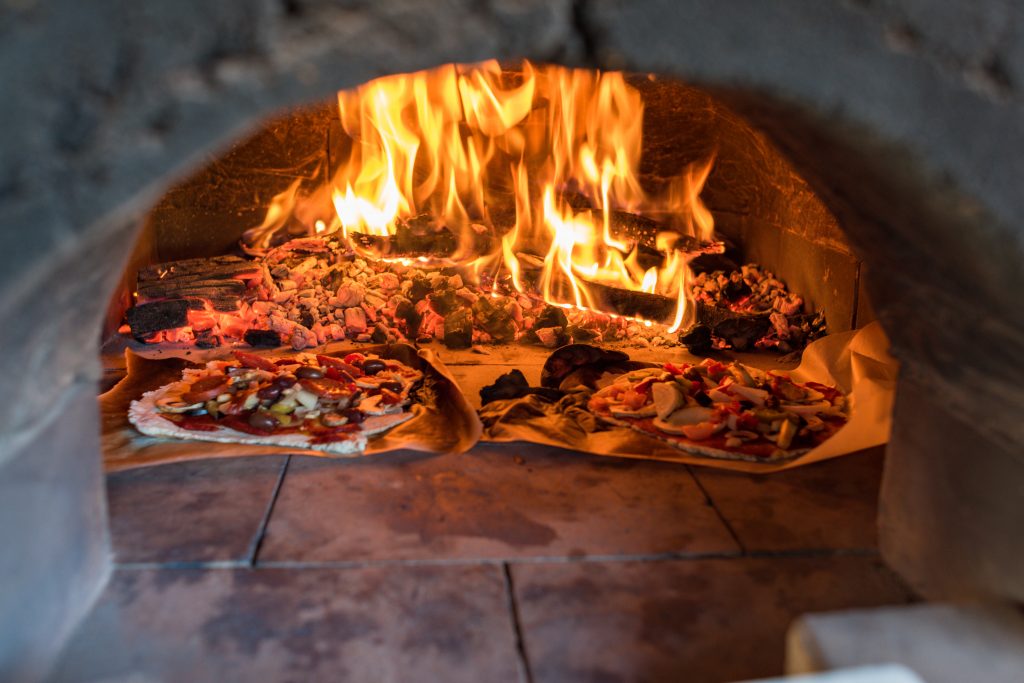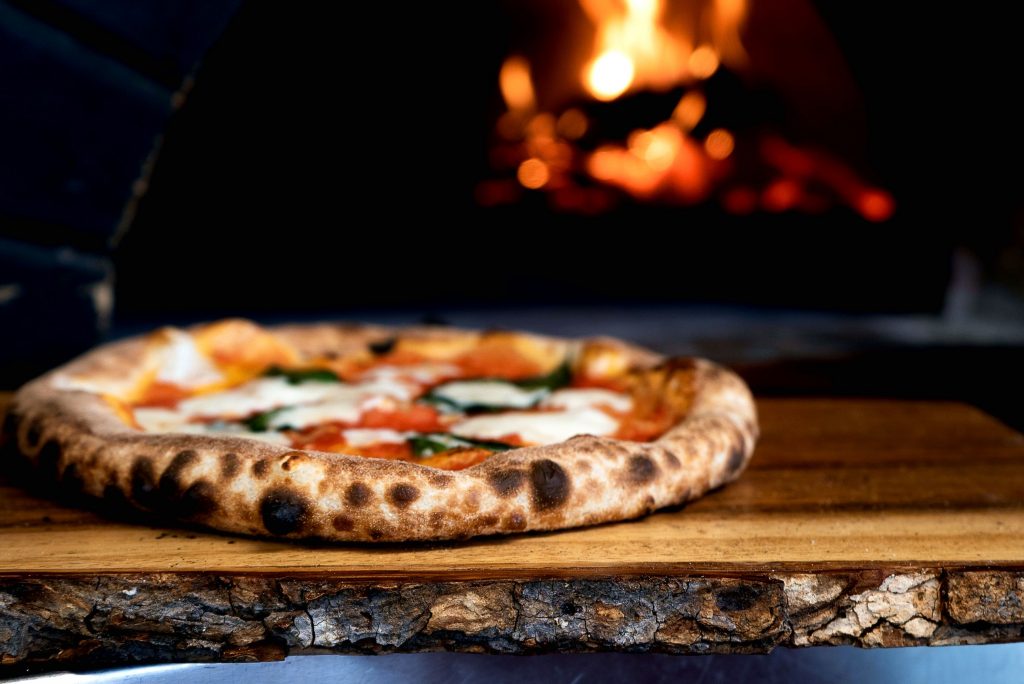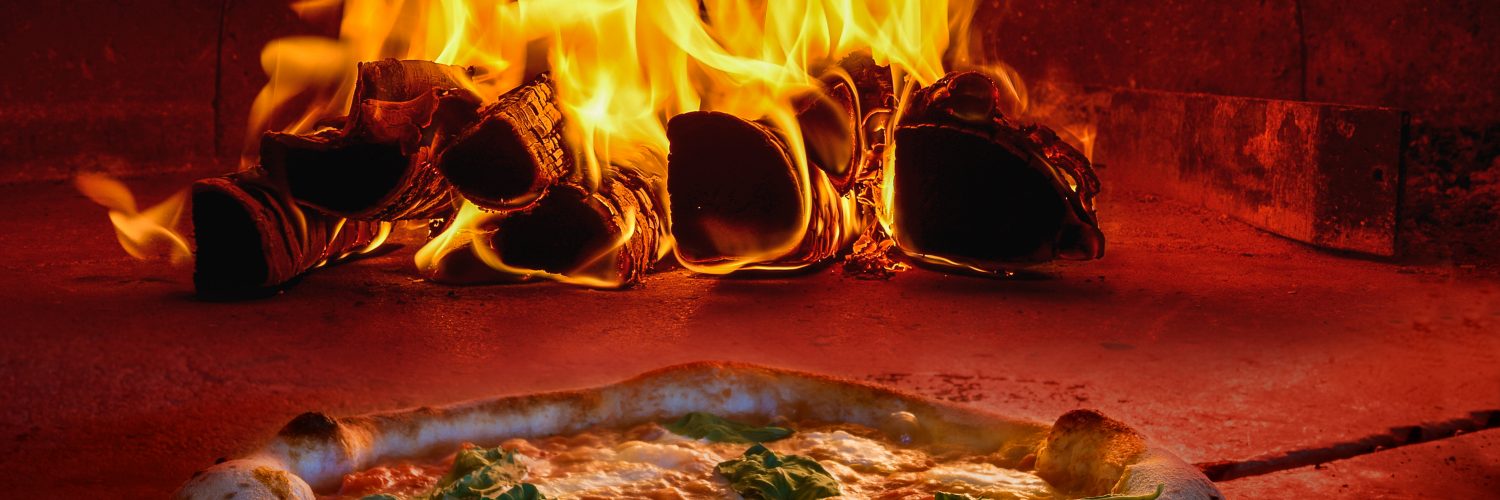Is there a better comfort food than the humble pizza? Probably not, but what a lot of people don’t realize is that there is better pizza out there. If you are craving something better than your average takeaway pizza, you need to try an authentic wood fired pizza and see what real pizza is all about.
Wood Fired Pizza Explained
Wood fired pizza is cooked in a brick oven that has been heated by a wood fire. The fire heats the bricks, which then cooks the pizza. This kind of indirect cooking helps bring out the flavors of the pizza while also cooking it evenly and imparting a great smoke flavor.
The regular pizzas that you are probably used to have been cooked in a gas or electric oven. This kind of cooking heats the pizza directly, so you are more likely to get some overcooked parts and some undercooked parts.

How Does A Wood Fired Pizza Oven Work?
A brick oven is an enclosed environment made out of exposed bricks except for a small opening in the front. At the back of the oven, a fire is built to heat these bricks to extremely high temperatures. As the bricks soak up the fire’s heat, they begin to radiate their own heat and create the ideal cooking environment for a pizza.
When the pizza and oven are ready, the pizza is placed inside the oven, directly on the bricks. The pizza is cooked by the heat of the fire, the radiating heat from the bricks, and the hot air circling within the oven. This dome of heat perfectly cooks all parts of the pizza and ensures a delicious meal every time.
Take Advantage of the Smoke
Although individual tastes may vary, most people would agree that a wood fired pizza tastes better. It tastes better because it cooks more evenly and because of the unique flavor that the smoke gives the pizza.
Because you can change the type of wood that you are using in a brick oven, you can pair pizza types with unique smoky flavor profiles. Each type of wood burns differently and can give your pizza a different flavor. In a brick oven, the smoke elevates your pizza from a simple to treat to a culinary experience.

Brick Ovens Cook Faster and Healthier
When you are cooking a pizza in a brick oven, the temperatures can reach more than 500 degrees Fahrenheit. At these higher temperatures, pizzas can be cooked in minutes. Although it will depend on the thickness of your crust, you can expect a wood fired pizza to be on your table far more quickly than one cooked in a conventional oven.
It’s not just about convenience, though. The speed of a brick oven also helps the vegetables stay nice and crisp. As soon as you take a bite, you will feel how the vegetables retain their firmness instead of turning into a flavorless mass. The vegetables also are able to keep their nutrients better, making your pizza more healthy overall.
A Crust That You Need to Try
Crusts are one of the most overlooked parts of pizzas. On a lot of pizzas, they are forgotten lumps of dough with too much oil and not enough flavor. It’s no wonder so many people just rip them off and throw them away.
With a pizza cooked in a brick oven, that won’t be a problem anymore. The hot bricks will evenly cook your pizza and create a beautiful crisp crust. The hot environment in the oven will also quickly remove any moisture from the pizza, so the crust won’t become soggy. Between the slight char and the taste of smoke, your crusts will finally get the appreciation that they deserve.

An Authentic Taste of Italy
Pizza is originally from Italy, and it was always cooked in these kinds of brick ovens heated by wood fires. As a true pizza lover, you owe it to yourself to try pizza as it was originally intended. Even today, official traditional pizza in Italy must be cooked in a brick oven to be considered authentic.
Everyone loves a great pizza. Whether it’s a slice of pizza from a shop down the street or a frozen treat picked up in a supermarket, pizza is always on the menu. However, a pizza can be so much more than that too. When you try a pizza cooked in a wood fired oven with a perfect crust and crisp toppings, you’ll know just what you’ve been missing out on.








Add comment